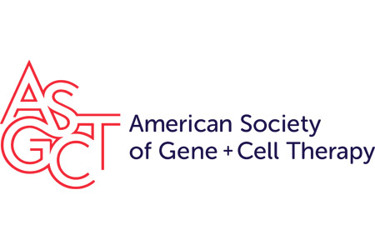XyloCor, Encoded, Ultragenyx, And SQZ Share News At ASGCT 25th Annual Meeting

By Erin Harris, Editor-In-Chief, Cell & Gene
Follow Me On Twitter @ErinHarris_1

The ASGCT 25TH Annual Meeting, May 16-19 in Washington, D.C., has delivered valuable insight to its attendees, who have the option to attend in person or virtually. Plenary sessions featured some of the most prominent luminaries in the field including AskBio’s Dr. Kathy High and NIH’s Dr. Francis Collins. As expected, CGT biotechs have brought their most recent and ground-breaking news to share with attendees. Here’s some of what’s been delivered at the event as well as Cell & Gene’s editorial coverage on the company’s sharing their exciting news.
XyloCor Therapeutics
XyloCor Therapeutics, a clinical-stage biopharma, shared its positive Phase 1 results from its study of novel gene therapy for refractory angina. XyloCor’s XC001 is a novel gene therapy designed to activate naturally occurring biological pathways by creating new vessels to improve blood flow to areas of the heart not receiving adequate blood supply. According to XylorCor, this news is important because this restored blood supply could potentially improve a patient's quality of life by enabling them to resume physical activities and could reduce episodes of chest pain associated with refractory angina. XyloCor is taking a novel approach by using gene therapy to deliver this vascular endolethial growth factor. In many other gene therapy trials, safety concerns arose due to systemic administration of high viral particle loads. Because XC001 can be injected directly into the heart, researchers believe they can dramatically reduce overall viral particle loads and systemic exposure while increasing efficacy.
XyloCor Therapeutics’ CEO, Al Gianchetti, was my guest on Cell & Gene: The Podcast, and we discussed XC001 at length as well as the company’s EXACT clinical trial, a Phase 1/2 multicenter, open-label, single arm, dose escalation trial for coronary artery disease — the most common type of heart disease — with gene therapy at its center. Listen to my conversation with Al here.
Encoded Therapeutics
Encoded Therapeutics, a developer of precision gene therapies, announced nonclinical showing how its proprietary human genomic regulatory element (RE) engineering platform has been used to develop cell-selective expression vectors for targeted gene therapy. The company efficiently discovered a spectrum of sequence-encoded genetic elements, including enhancers, promoters, and UTR elements, that drive selective expression profiles in mice. These REs function within the size constraints and episomal architecture of adeno-associated viruses (AAVs) and are compatible with multiple capsids and gene delivery systems. Encoded's CEO, Kartik Ramamoorthi, Ph.D., explained that by combining human genomic regulatory elements to customize expression profiles and minimize off-target effects, the company aims to improve the safety and efficacy of gene therapies for a broad range of monogenic and non-monogenic diseases in the future.
Encoded’s Chief Manufacturing Officer, Andy Stober, was my guest on Cell & Gene: The Podcast, and during the episode, we discussed not only AAV manufacturing but also the unique commercial manufacturing issues in gene therapy and how to address them. Stober also shared some of the lessons he's learned, which may educate the next generation of gene therapy scientists to accelerate future manufacturing success. We also talk about what developers need to consider regarding the ethical responsibilities in gene therapy. Give our conversation a listen here.
SQZ Biotechnologies
SQZ Biotechnologies presented data from the first non-clinical studies of its point-of-care (POC) manufacturing system, and the data will demonstrate an ability to produce SQZ cell therapy candidates with comparable or improved performance relative to conventional clean room manufacturing processes. In addition, SQZ announced a collaboration with STEMCELL Technologies to co-develop and commercialize a research-use-only (RUO) microfluidic intracellular delivery system. The new RUO system will be based on SQZ’s Cell Squeeze technology and will offer the life sciences community access to a unique cell engineering capability to advance preclinical research. These activities support SQZ’s mission to unlock the full potential of cell therapies for multiple therapeutic areas.
Earlier this year, SQZ Biotechnologies’ CEO, Armon Sharei, Ph.D., penned and article for Cell & Gene that explains why advances in manufacturing could significantly improve the accessibility and cost-effectiveness of cell therapies and further enable newer therapeutics, ultimately allowing for broader patient impact through an expanding multitude of complex biologies only attainable through a cellular therapeutic. He also details the key limitations to permanent (usually genetic) cell alterations that limit the field’s impact. Read Sharei’s article, Rethinking Cell Therapy Durability: Transient, Non-genetic, Changes to Cell Function Could be Key to Broader Patient Impact, for the entire perspective.
Ultragenyx
At the meeting, Ultragenyx, a biopharma company involved in the research and development of novel products for treatment of rare and ultra-rare genetic diseases, announced clinical, preclinical, and manufacturing data from its investigational gene therapy programs. They delivered an oral presentation (Abstract #1212) highlighting sustained efficacy and safety results at Week 52 and up to three years from a Phase 1/2 trial of DTX401, an AAV8-mediated, liver-directed gene therapy, in adults with Glycogen Storage Disease Type Ia (GSDIa). They delivered another oral presentation (Abstract #463) from the company’s Phase 1/2 trial evaluating the safety and efficacy of DTX301 in adults with late-onset ornithine transcarbamylase (OTC) deficiency.
Just last year, I had a chance to talk to Ultragenyx’s Chief Scientific Officer, Sam Wadsworth, about the company’s HeLa gene therapy platform and how the company’s AAV-based therapies differ from others like it. He also shared his thoughts about the importance of partnerships for early-stage preclinical programs using the company’s HeLa platform. At the time, Wadsworth explained what the company presented at the 2021 ASGCT Annual Meeting; read on to see how Ultragenyx has progressed in just one year.
Did you attend ASCGT 25th Annual Meeting? I’d love to hear from you about your take-aways from the event.
